Cornbread and Shrimp Stuffed Catfish Fillets
If you’re looking to impress your guests or simply shake up your weeknight dinner routine, Cornbread and Shrimp Stuffed Catfish Fillets deserve a place on your table.
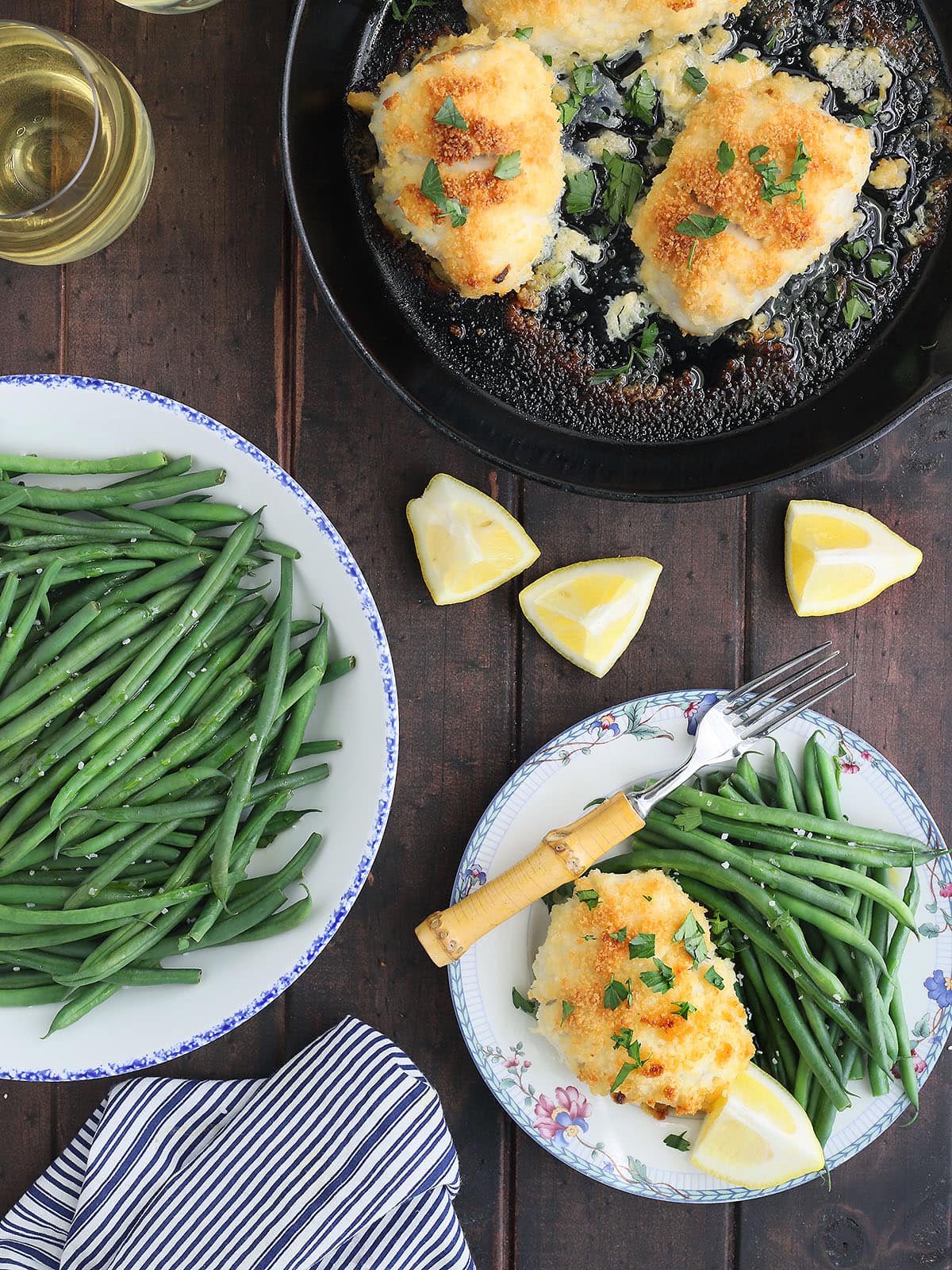
At its core, Cornbread and Shrimp Stuffed Catfish is a celebration of textures and flavors. You’ve got the savory softness of crumbled cornbread, the delicate bite of shrimp, and the light flaky flavor of catfish. Top it all off with a buttery crust of grated Parmesan and panko breadcrumbs, and what you have is a dish that feels both nostalgic and new.
Ingredients and tools you will need
With everything prepped and ready, this dish comes together smoothly and delivers tons of flavor with minimal fuss. Here is what you’ll need:
- 4 tablespoons unsalted butter, divided
- 1/4 cup finely diced celery
- 1/4 cup finely diced yellow onion
- 1 cup crumbled cornbread – check out this recipe for homemade southern skillet cornbread.
- 1/2 cup chicken broth, plus more as needed – check out this recipe for homemade chicken stock.
- 1 large egg, slightly beaten
- 1/4 cup tiny shrimp or shell-off cooked and diced shrimp
- 4 catfish fillets
- 1/4 cup Panko bread crumbs
- 1/4 cup grated Parmesan cheese
- Chopped fresh parsley and fresh lemon slices, optional
Tools:
- Large skillet
- Mixing bowls (at least two)
- Fork (for mashing the cornbread)
- Measuring cups and spoons
- Spatula or wooden spoon
- Toothpicks
- Oven-safe casserole dish or oven-safe skillet
- Oven (preheated to 350°F)
- Basting brush (optional, for butter, if desired)
- Cutting board and knife (for dicing vegetables/shrimp)
- Tongs or spatula (for handling the fillets)
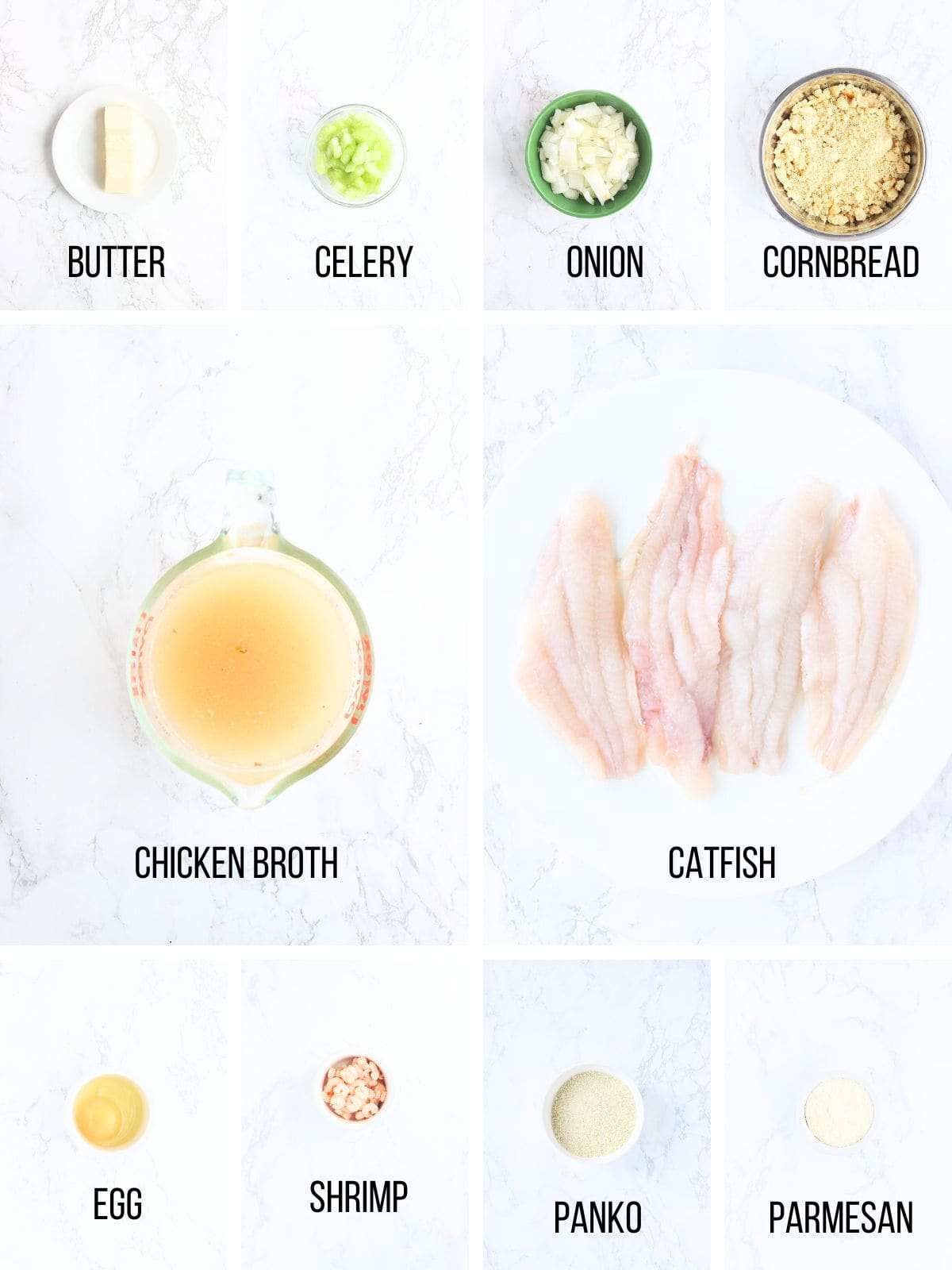
What to look for when choosing catfish fillets from the store
In the last several years, I have become very shrewd when it comes to the fish I feed my family. I am a firm believer that you get what you pay for, not just catfish, but any type of fish.
The first thing I look for is country-of-origin. Since 2005, large retailers are required to use country-of-origin labeling (C.O.O.L.) so consumers will know where their fish came from and if it was wild caught or farm-raised. I only purchase U.S. farm-raised catfish. Here’s why:
- Fish imported from foreign countries aren’t held to the same strict quality standards as U.S.- based fisheries. There are little to no regulations monitoring the condition of the ponds the fish are raised, how the fish are transported and if the processing facilities are clean.
- 99% of imported seafood is never tested or inspected. Of the small percentage that is tested, 10% contained unsafe traces of drugs that are banned in the U.S., such as formaldehyde and certain antibiotics. Ingesting this fish could lead to food poisoning, allergic reactions, antibiotic resistance and cancer.
- Fraud among fish and seafood imports is rampant. It is not uncommon to find a less desirable species of fish being marketed as something it’s not. The label might say catfish, but there is no guarantee that’s what you’re actually buying.
Ninety-four percent of the farm-raised catfish sold in the United States comes from just four states – Mississippi, Arkansas, Alabama and Louisiana. Since 1980, my own home state of Mississippi has led the U.S. in catfish production. Catfish farmers in the United States are monitored under very strict government regulations.
How to make shrimp stuffed catfish fillets
- Melt two tablespoons of butter in the skillet over medium heat. Toss in your diced celery and onion, and sauté for about seven minutes until they’re soft and aromatic. Once they’re tender, set them aside to cool slightly while we get the stuffing ready.
- Grab a medium bowl and add your crumbled cornbread. Pour in the chicken broth and use a fork to mash everything together. It should be moist and just a little soupy—if it feels too dry, go ahead and add a splash more broth.
- Now stir in your beaten egg, the tiny shrimp, and those sautéed veggies. Mix everything together until it’s well combined. Season with a bit of salt and ground black pepper to your liking.
- Lay out the catfish fillets, flat side up, on your work surface. Season each fillet lightly with salt and pepper. Then, spoon about three tablespoons of the cornbread stuffing down the center of each fillet—leave about an inch of space at the top and bottom so the filling doesn’t spill out.
- Starting from the thicker end of the fillet, gently roll each one up like a jelly roll. Once rolled, secure the thin end with a toothpick so it doesn’t unravel in the oven.
- Melt the remaining 2 tablespoons of butter (you can do this in the microwave or in a small pan). In a bowl, stir in the Panko breadcrumbs until they’re coated in that buttery goodness. Then mix in the grated Parmesan. Now take each rolled catfish fillet and gently press the top into the breadcrumb mixture. It’ll stick to the fish and give you that golden, crunchy top when baked.
- Place your stuffed fillets in a greased baking dish or oven-safe skillet. Pop it into a 350°F oven and bake for about 25 to 30 minutes, or until the fish flakes easily with a fork and the topping is golden brown.
- Carefully remove the toothpicks before serving. If you want to get fancy, sprinkle on some fresh parsley and squeeze some lemon juice over the top for brightness.
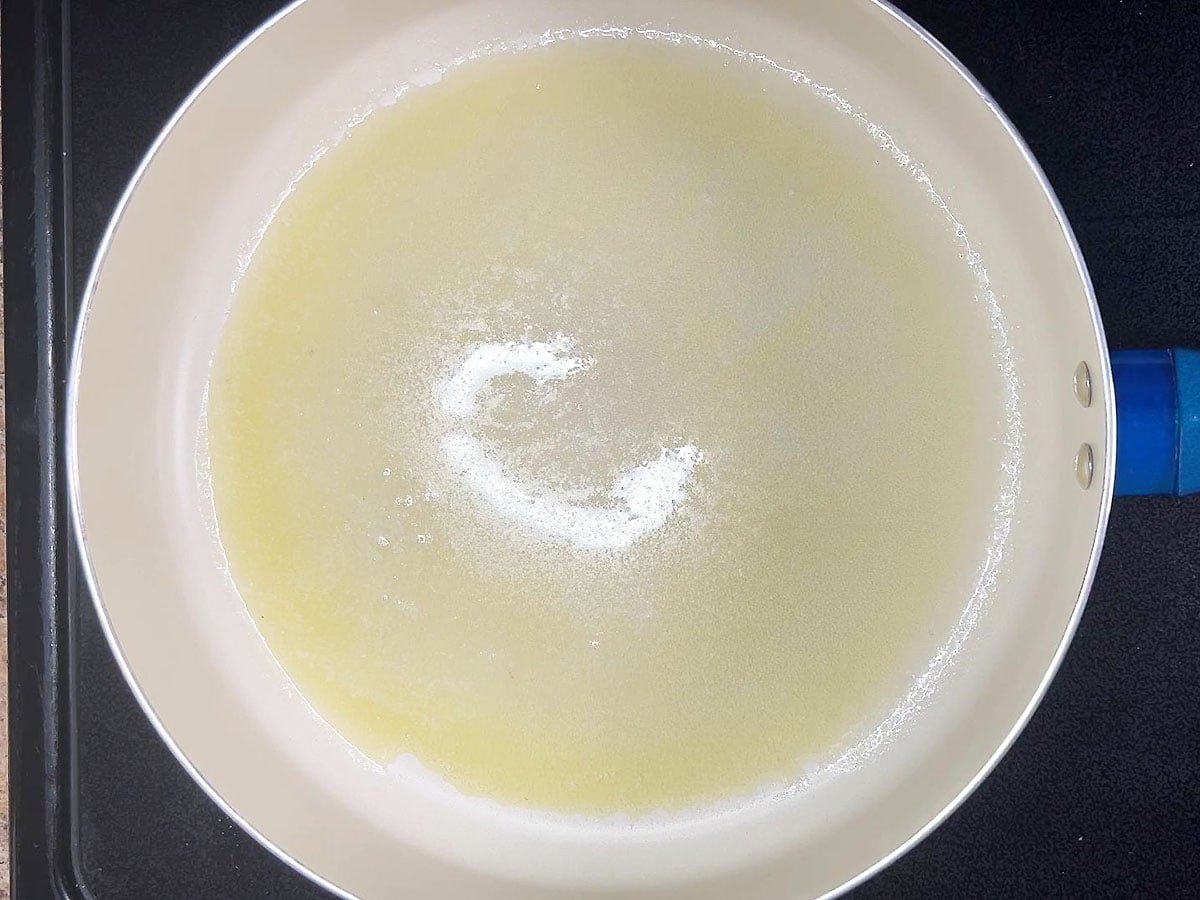
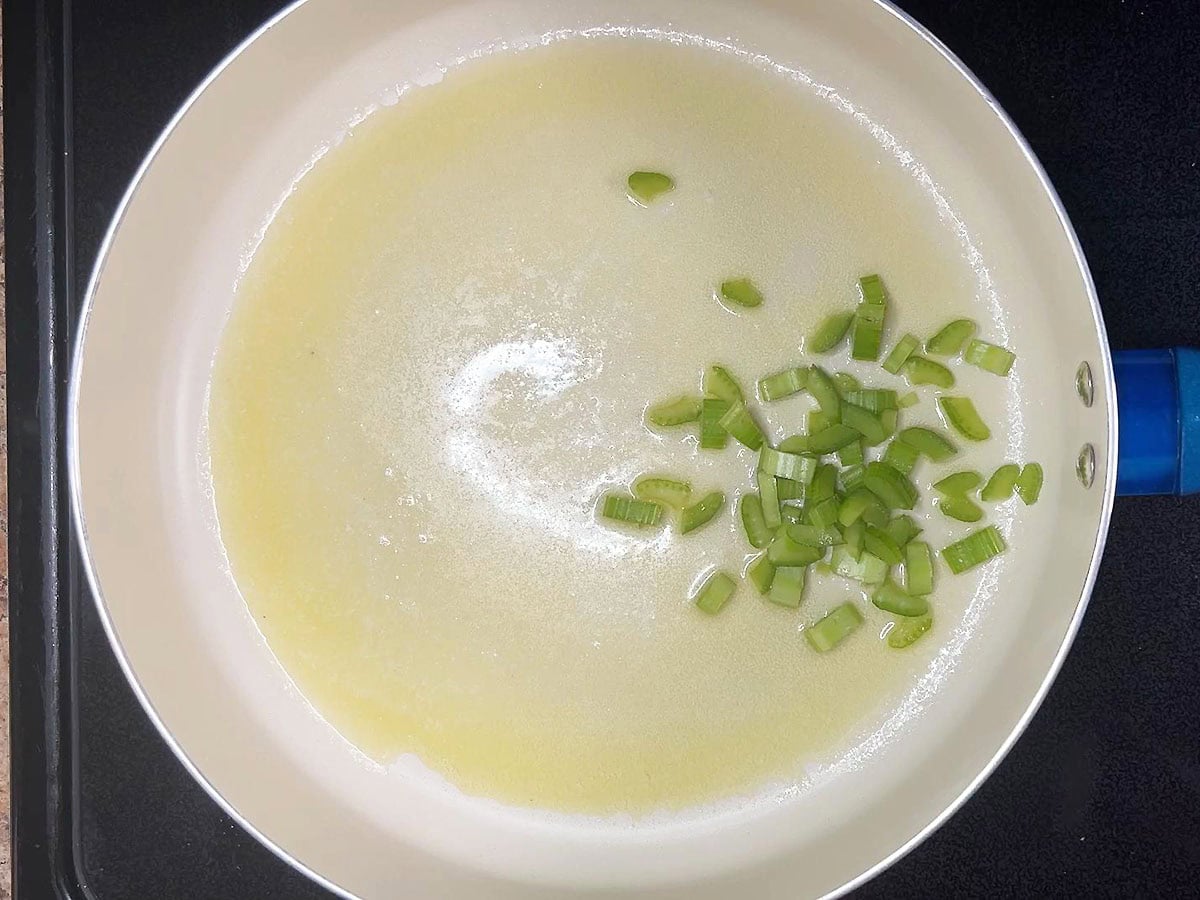
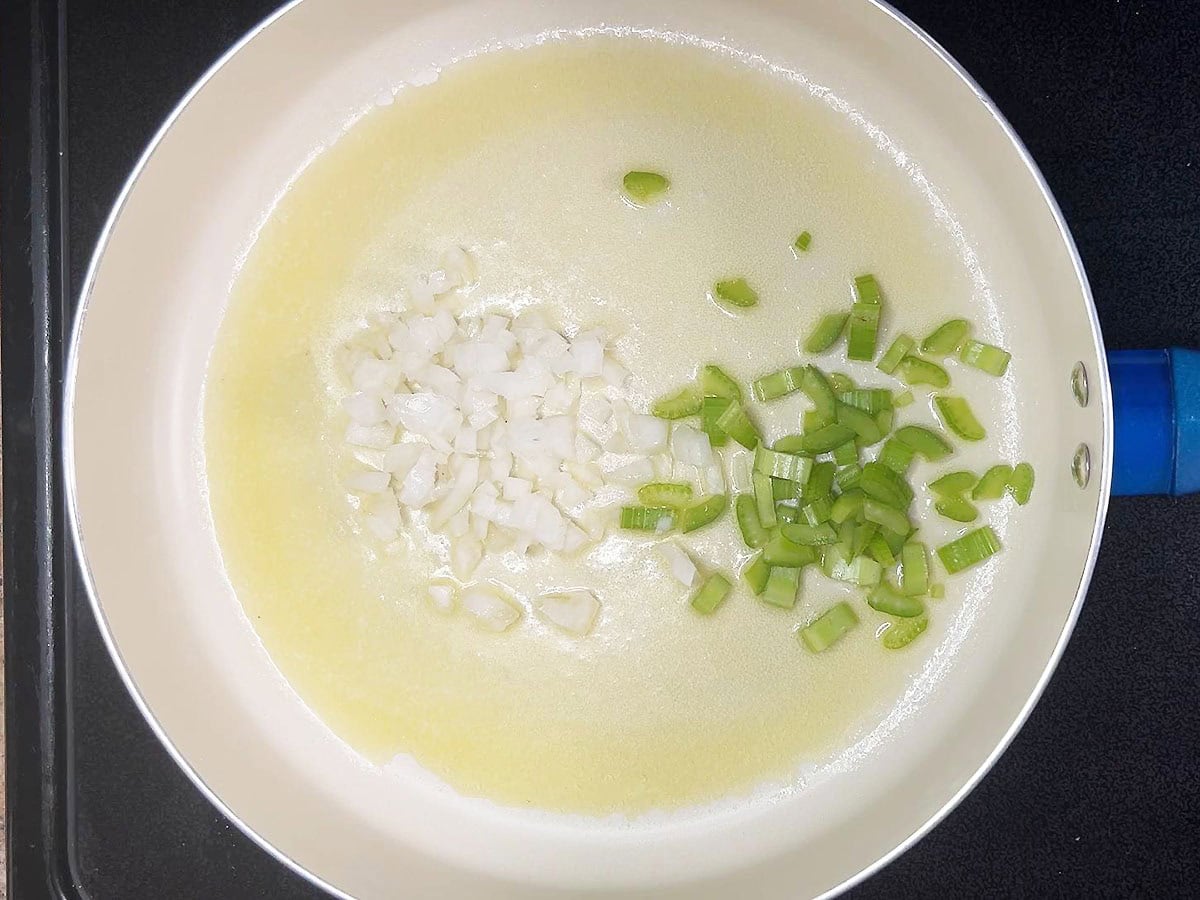
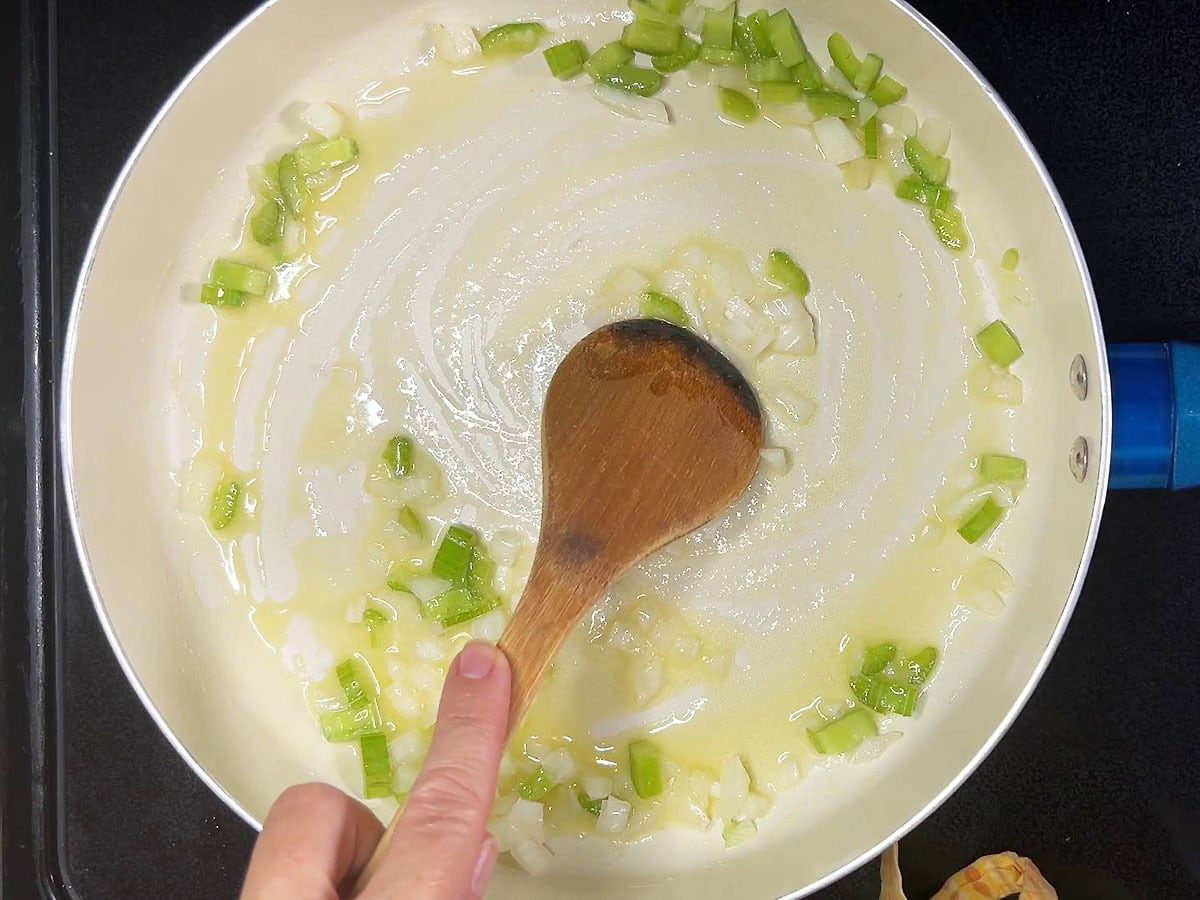
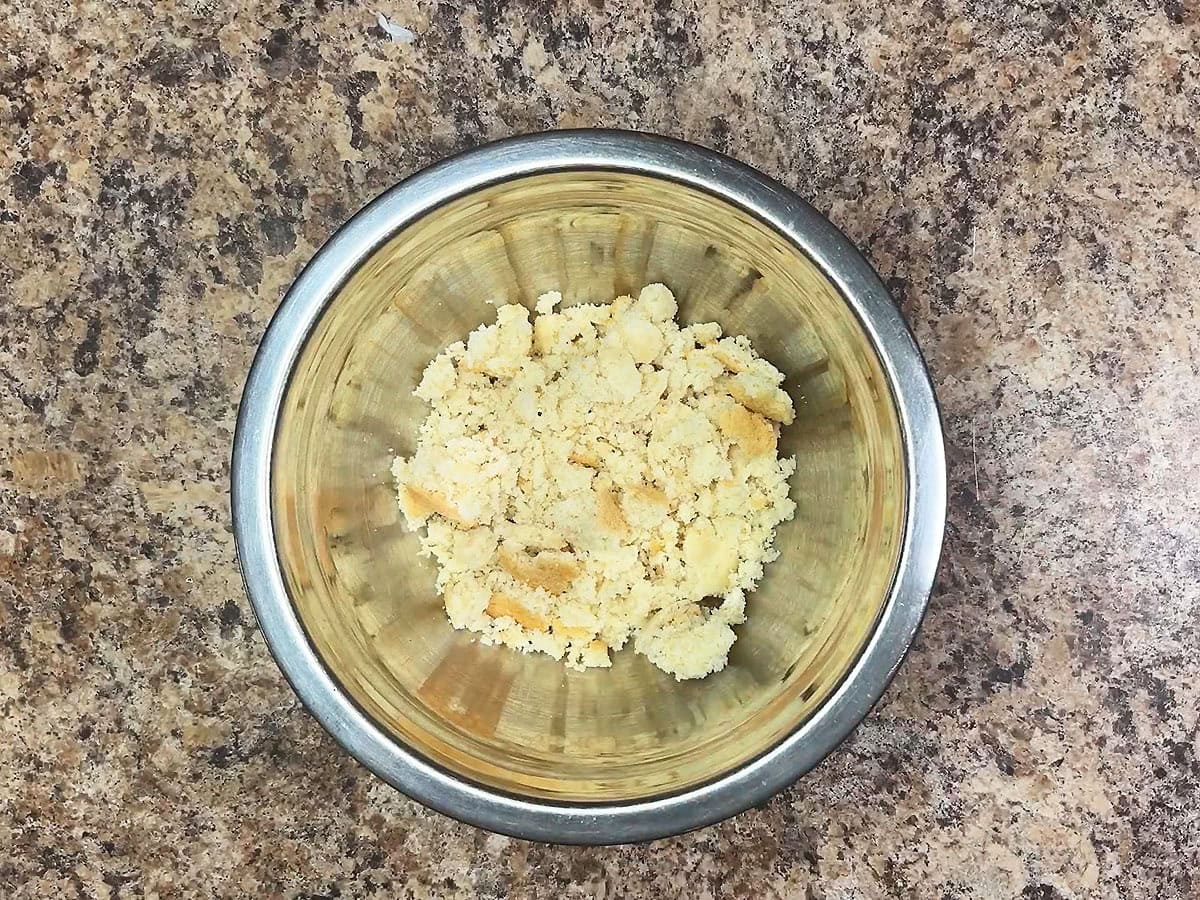

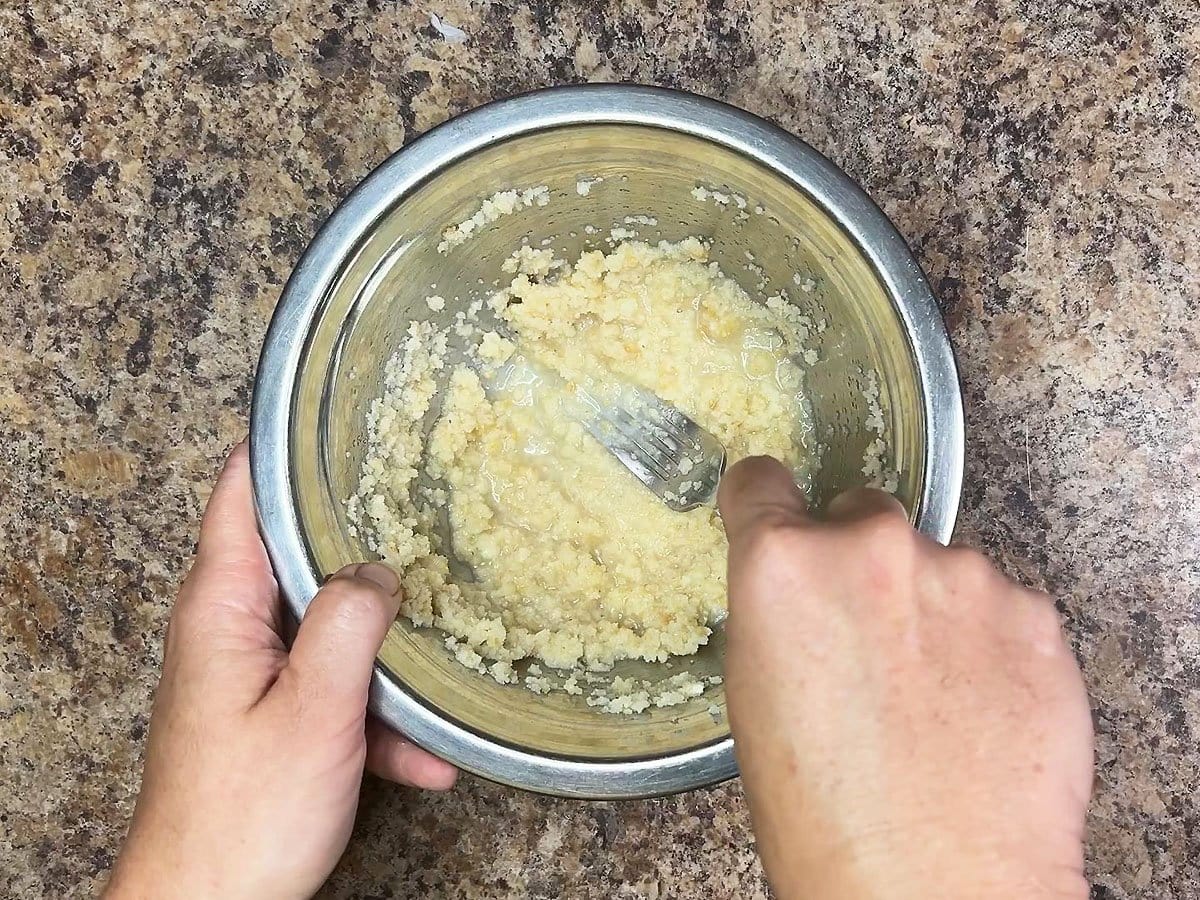
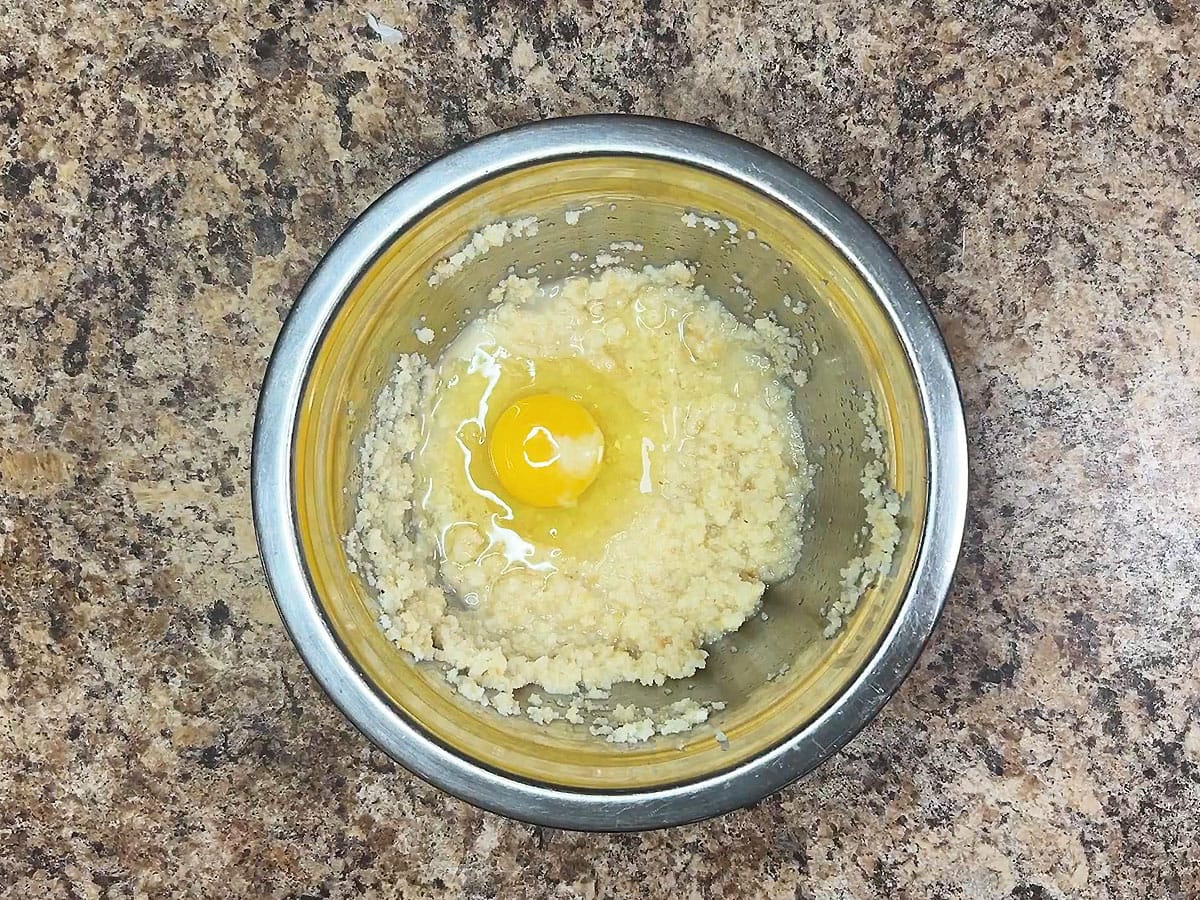
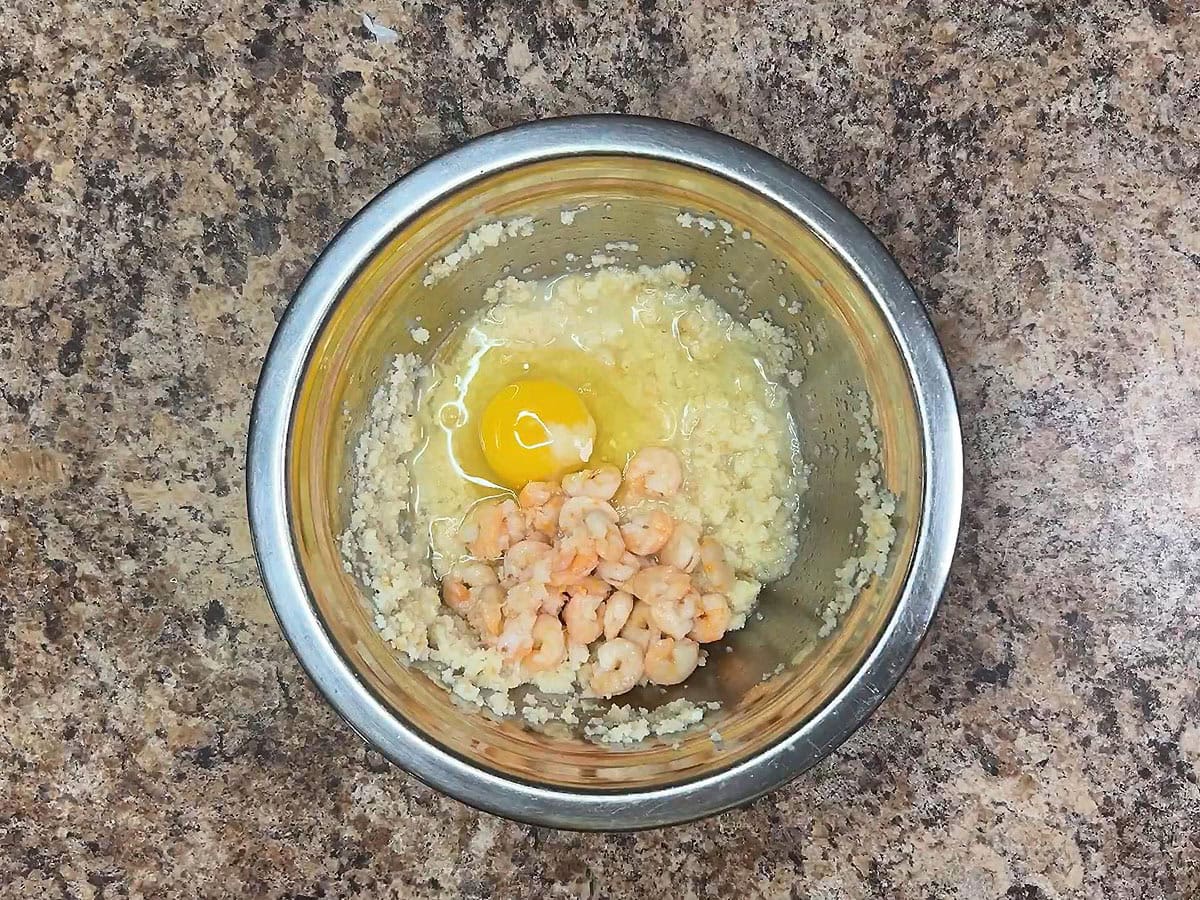
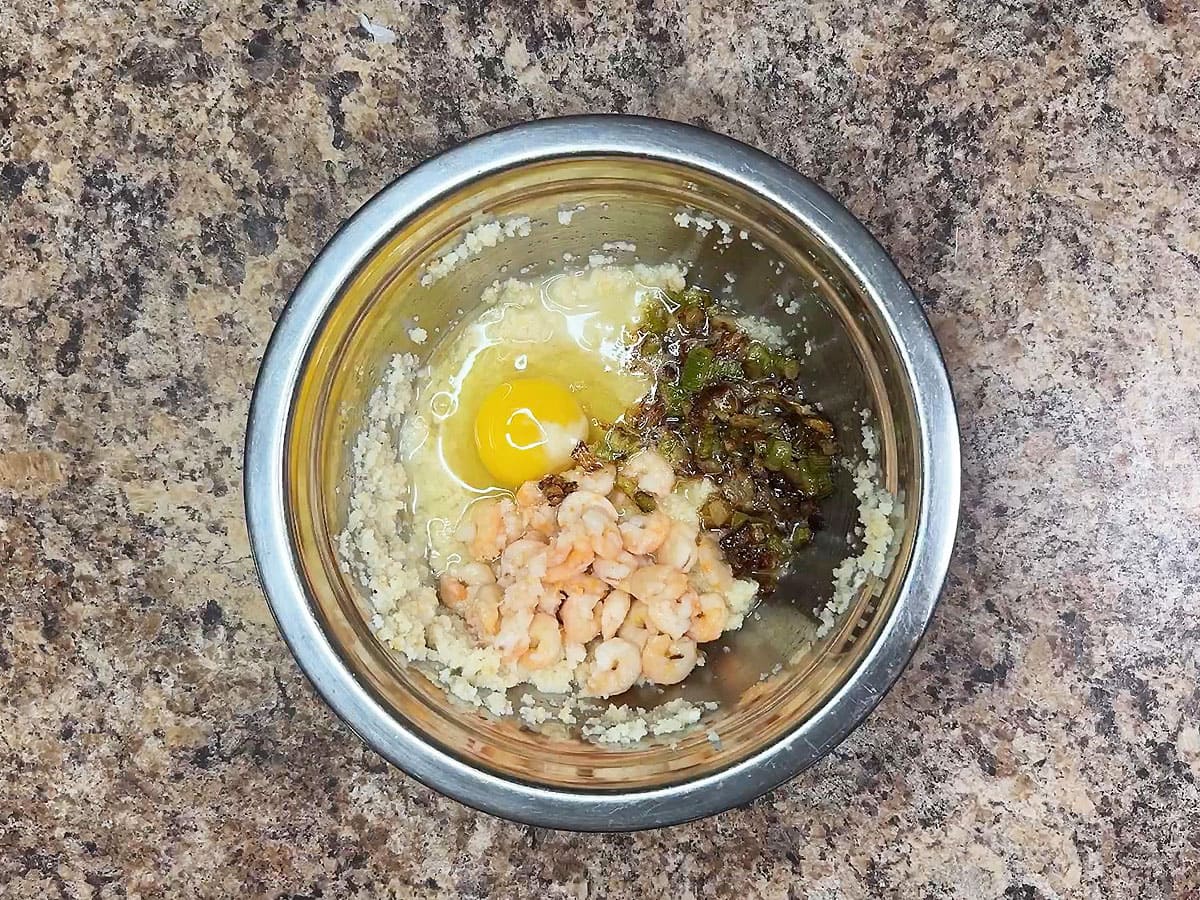
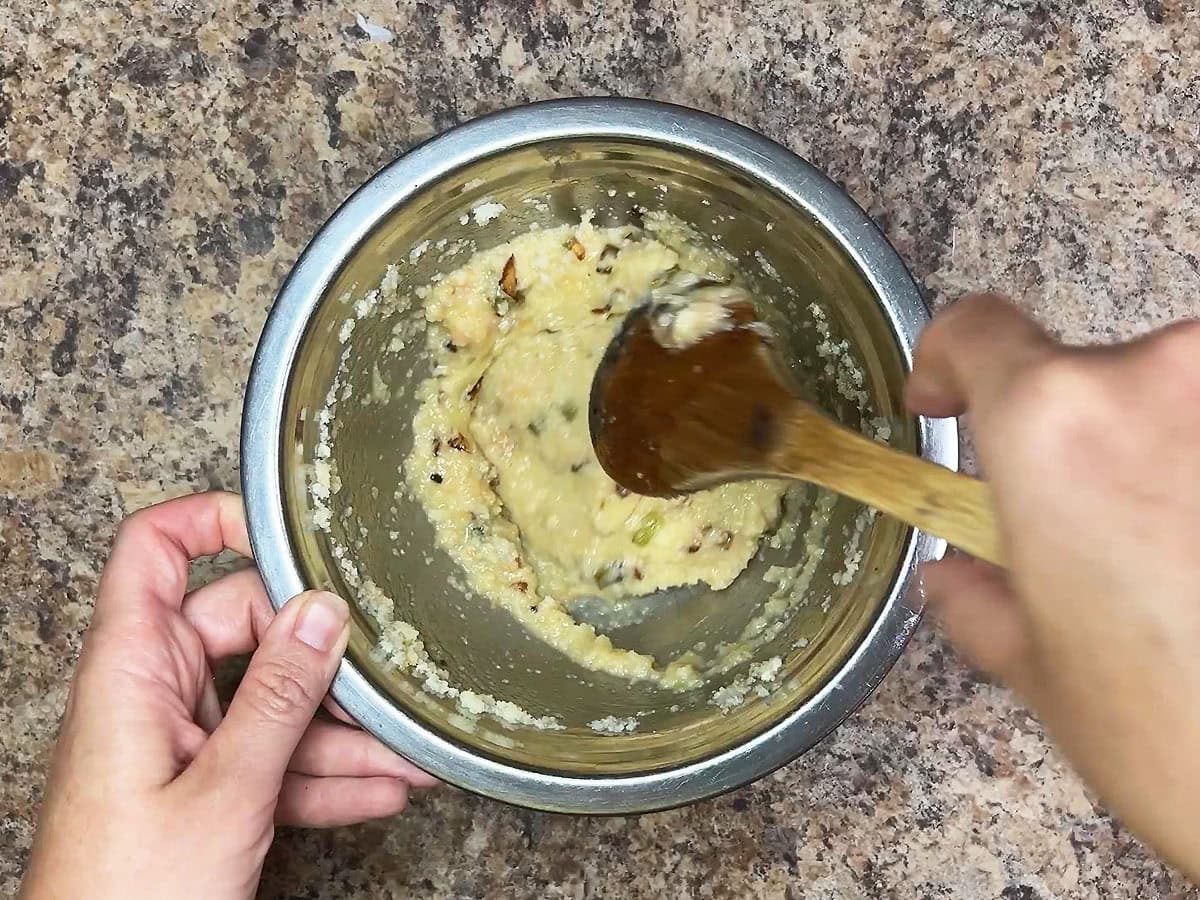
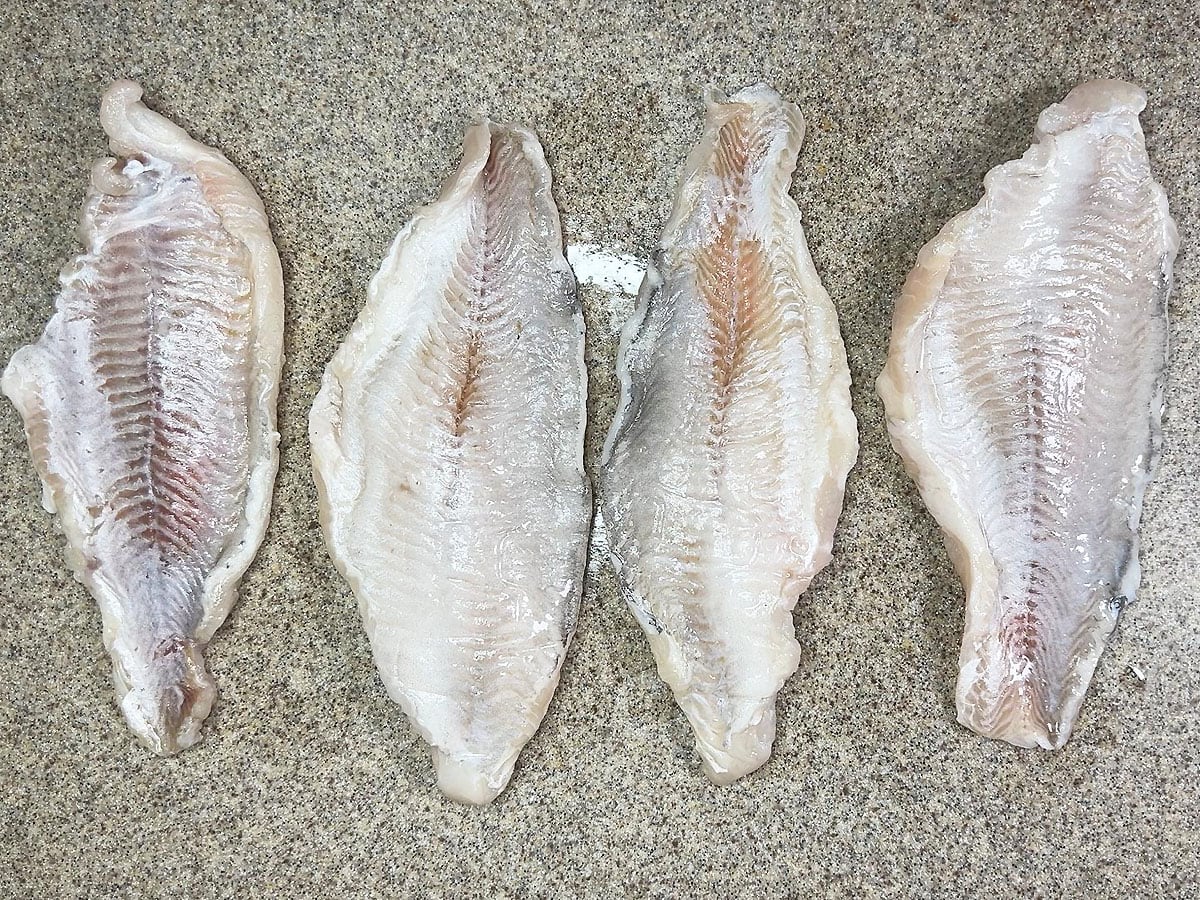
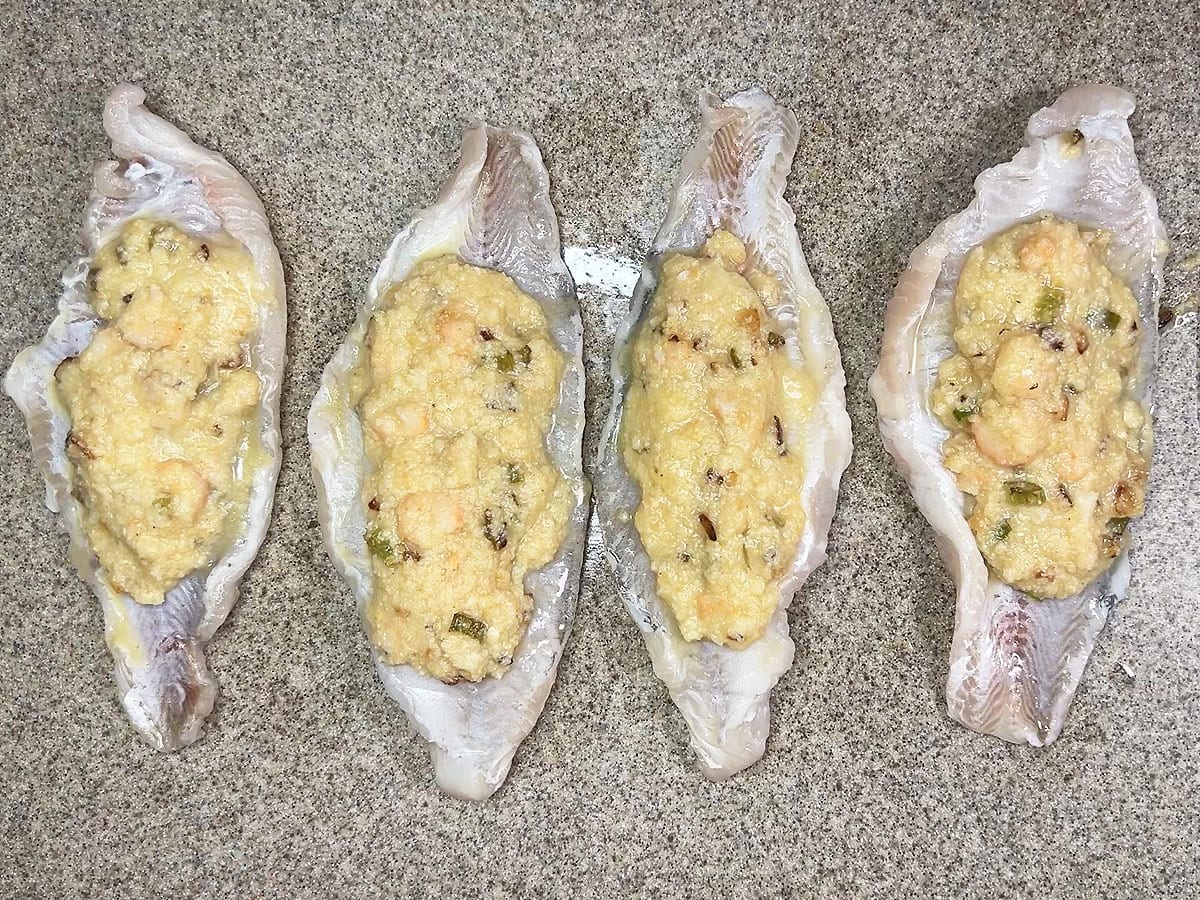
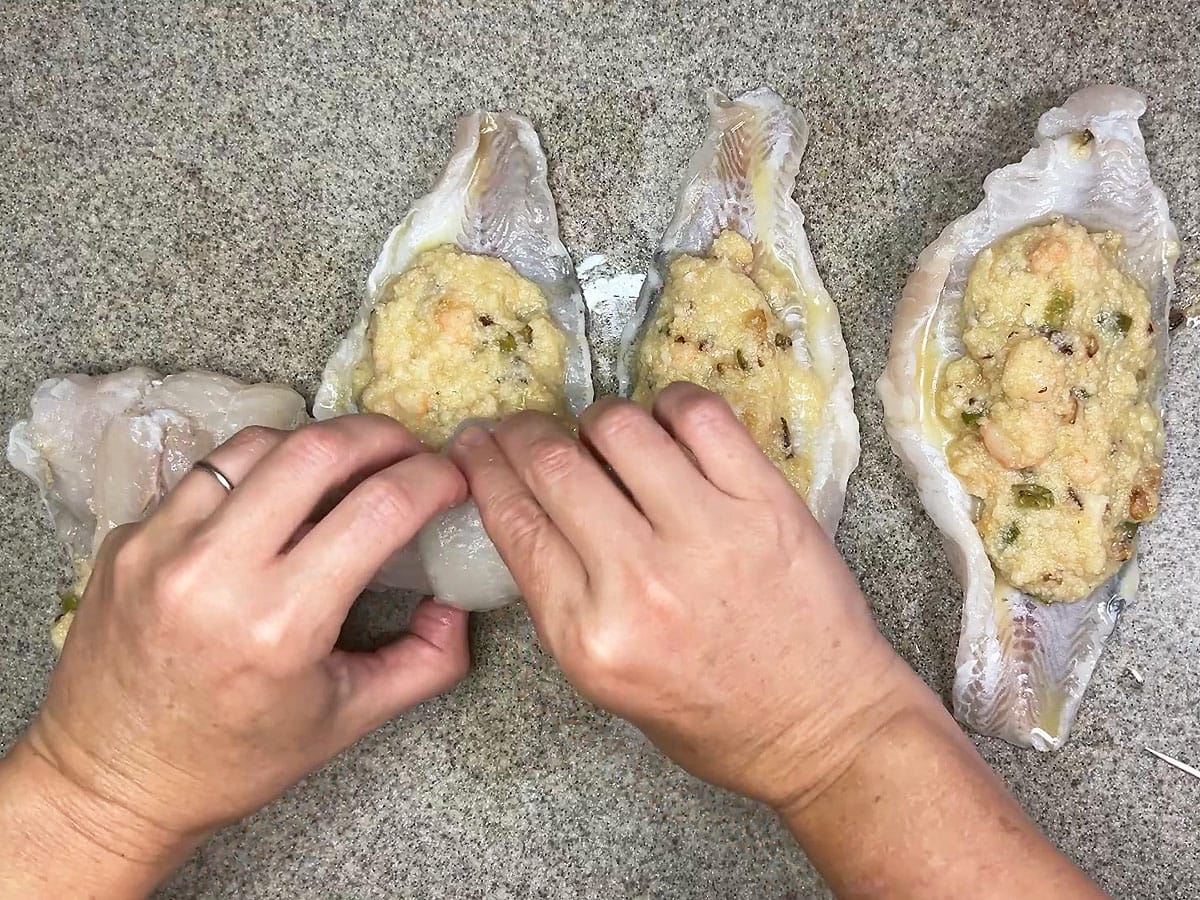
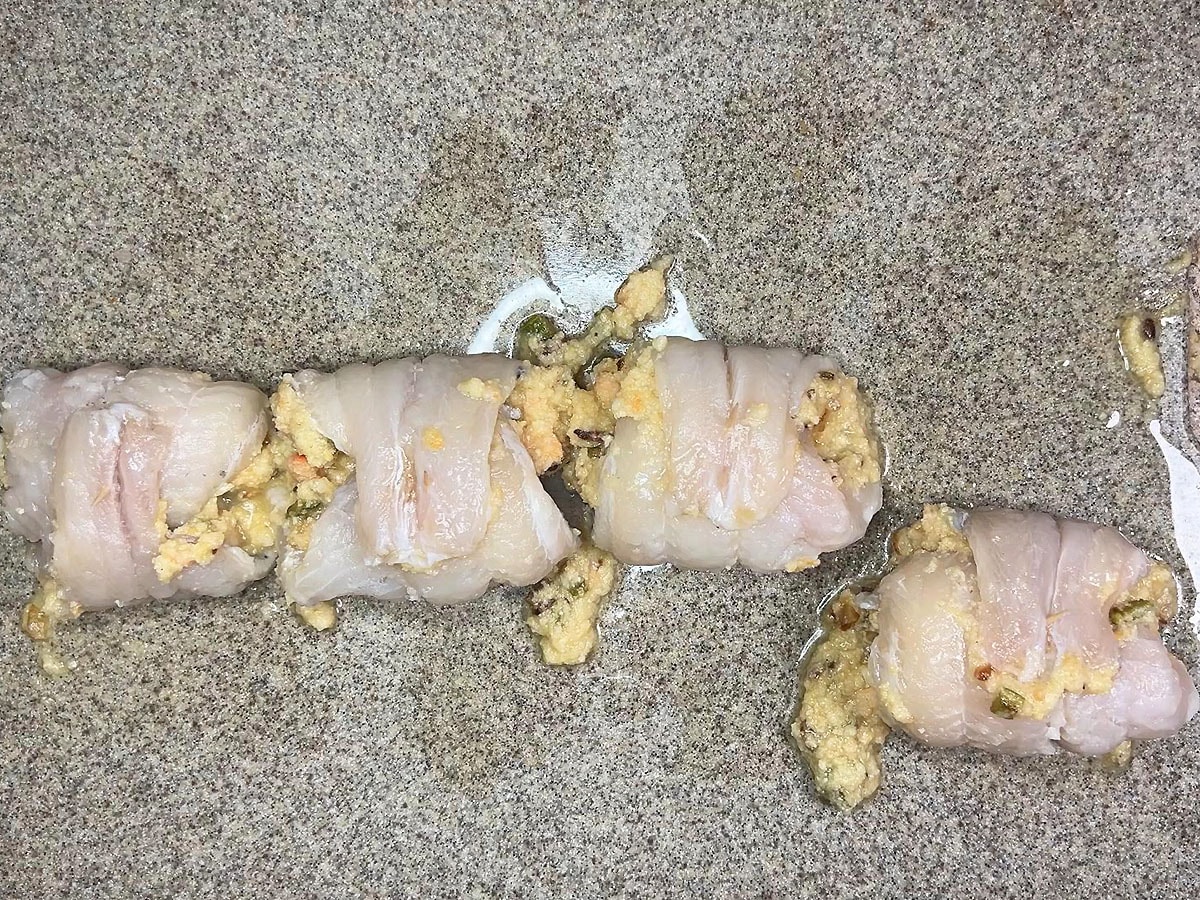
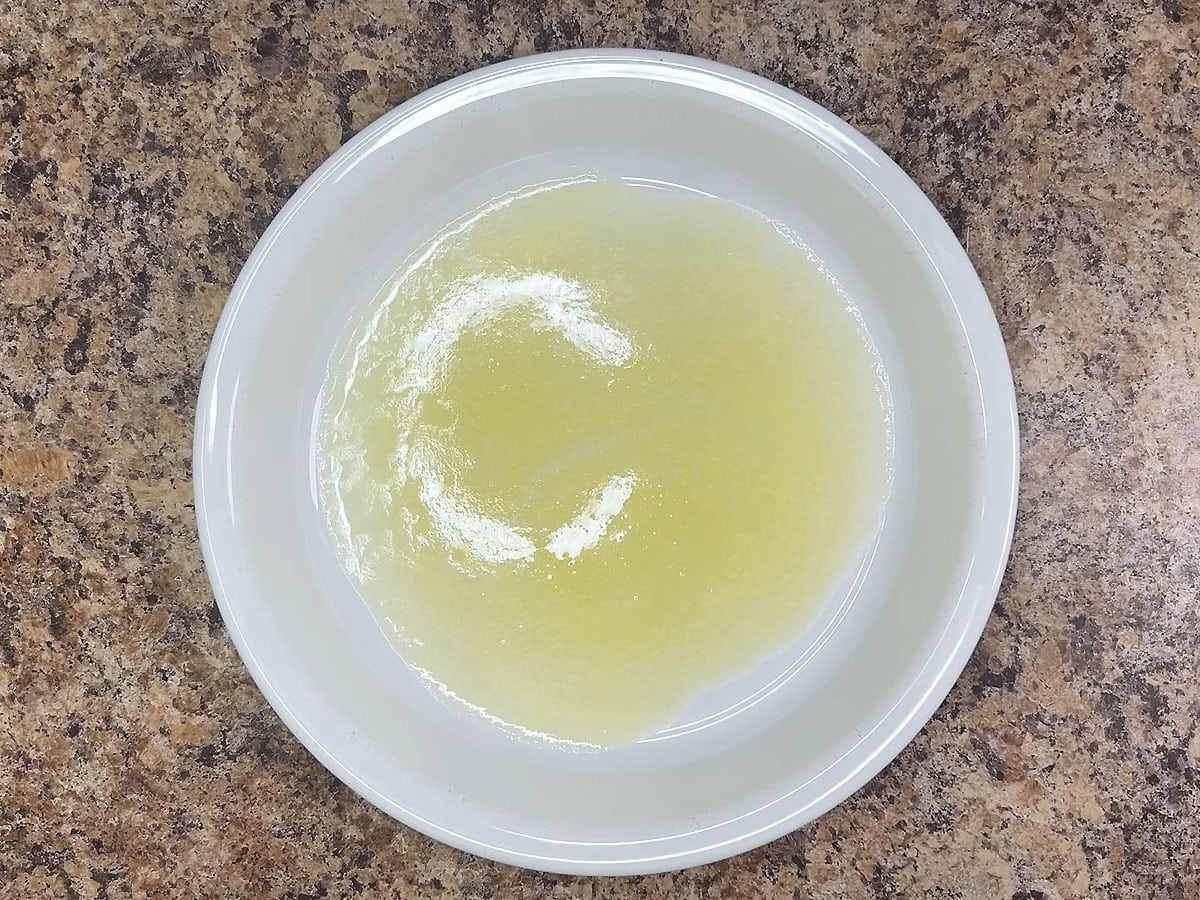
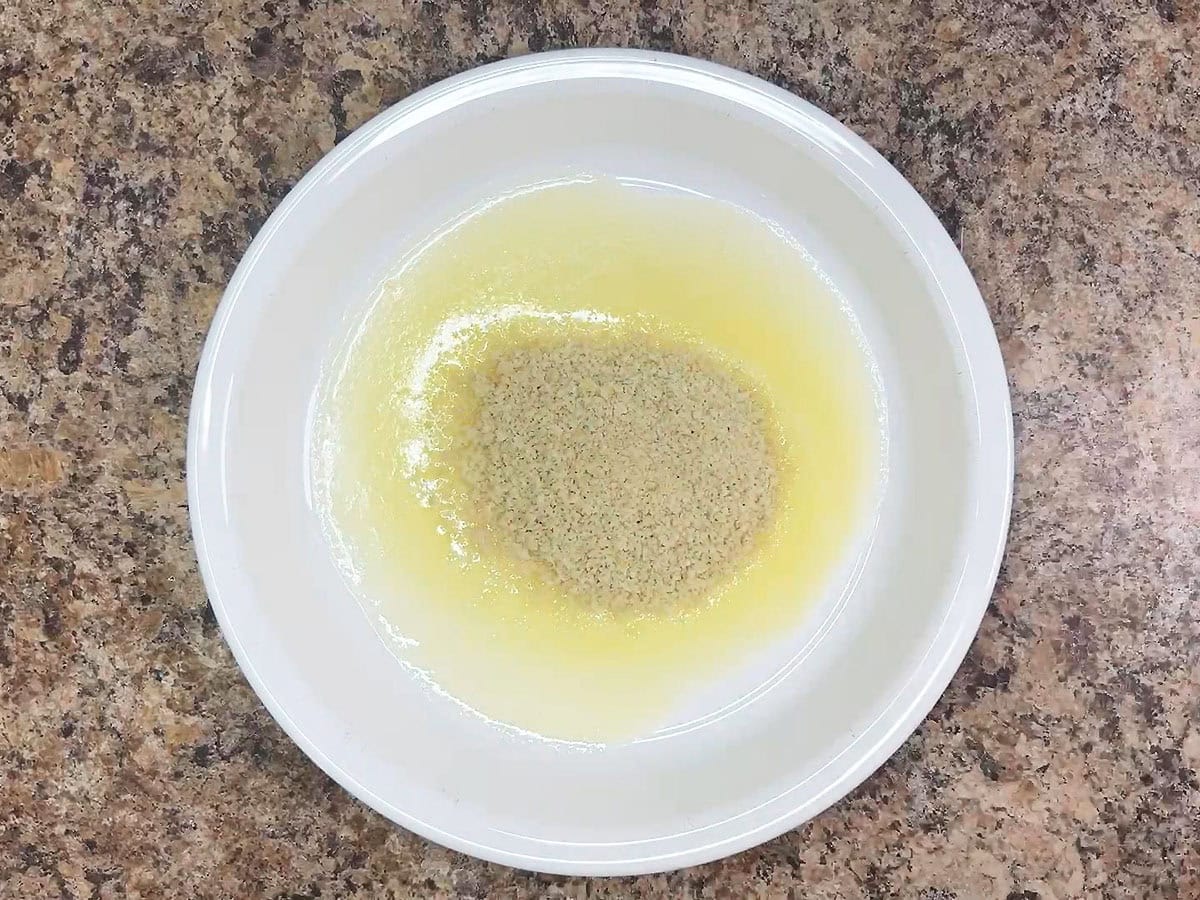
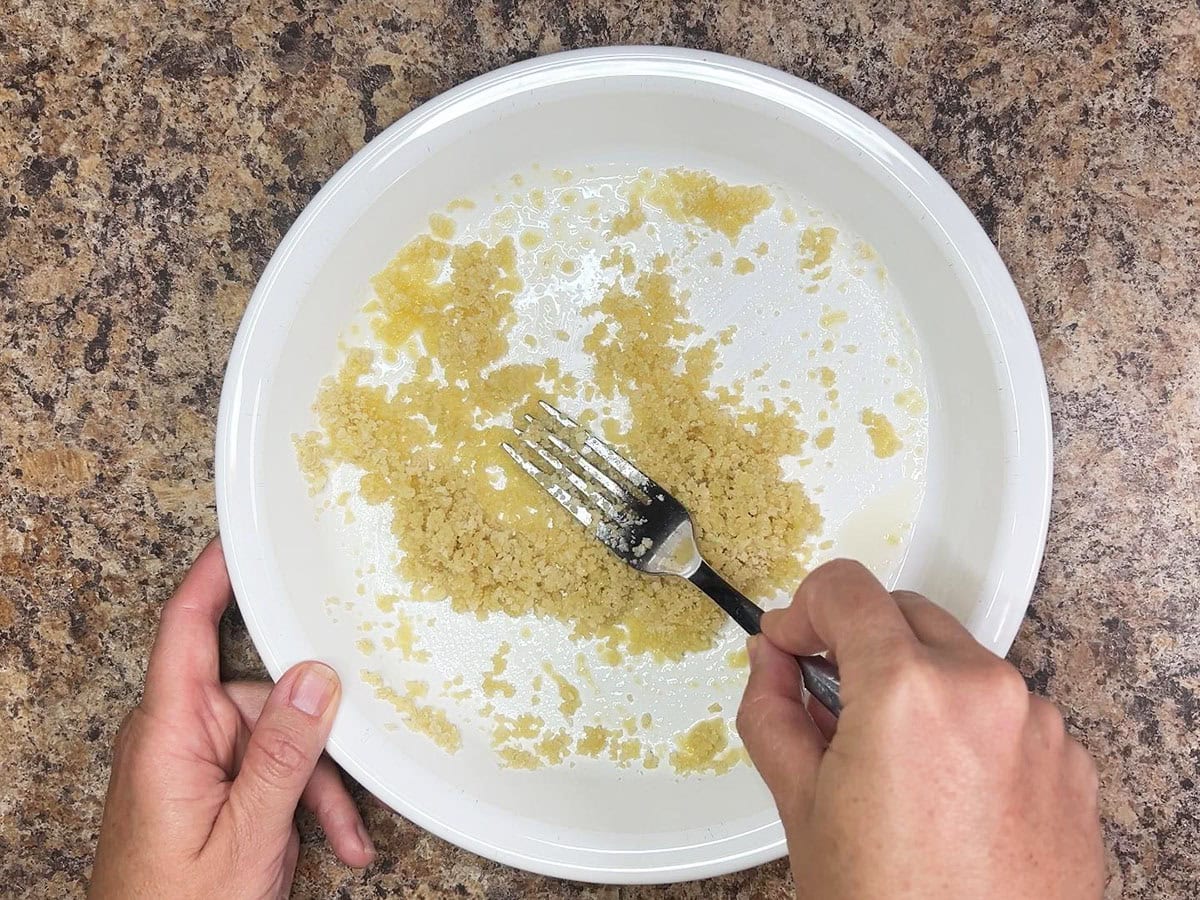
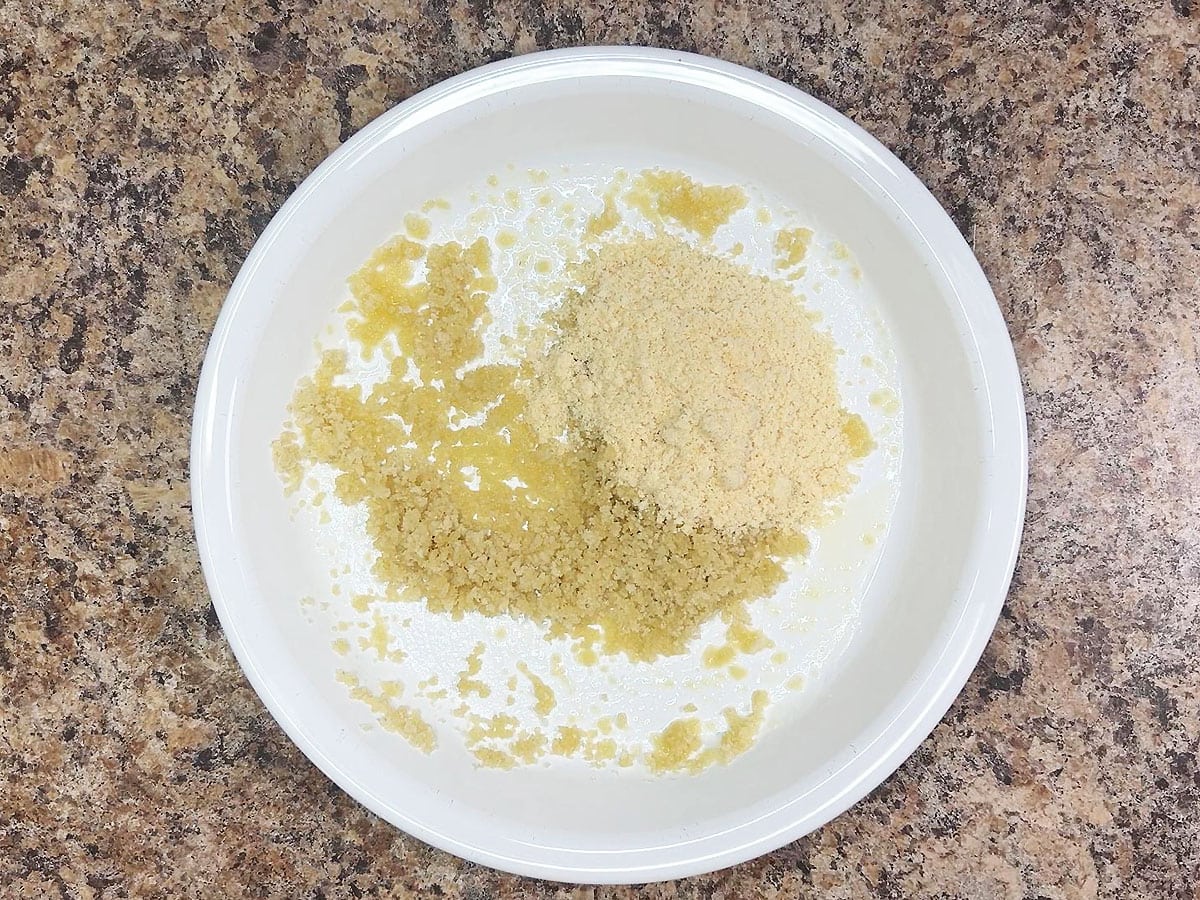
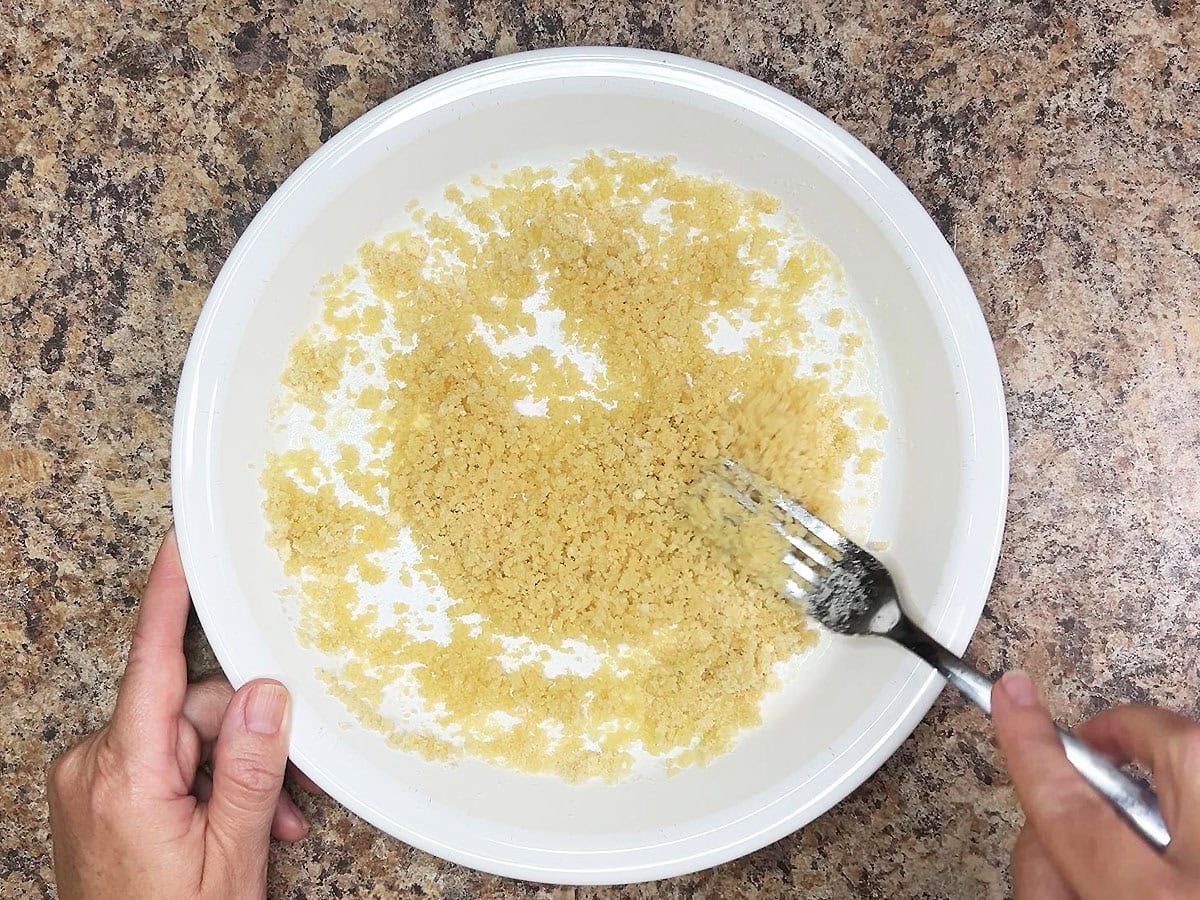
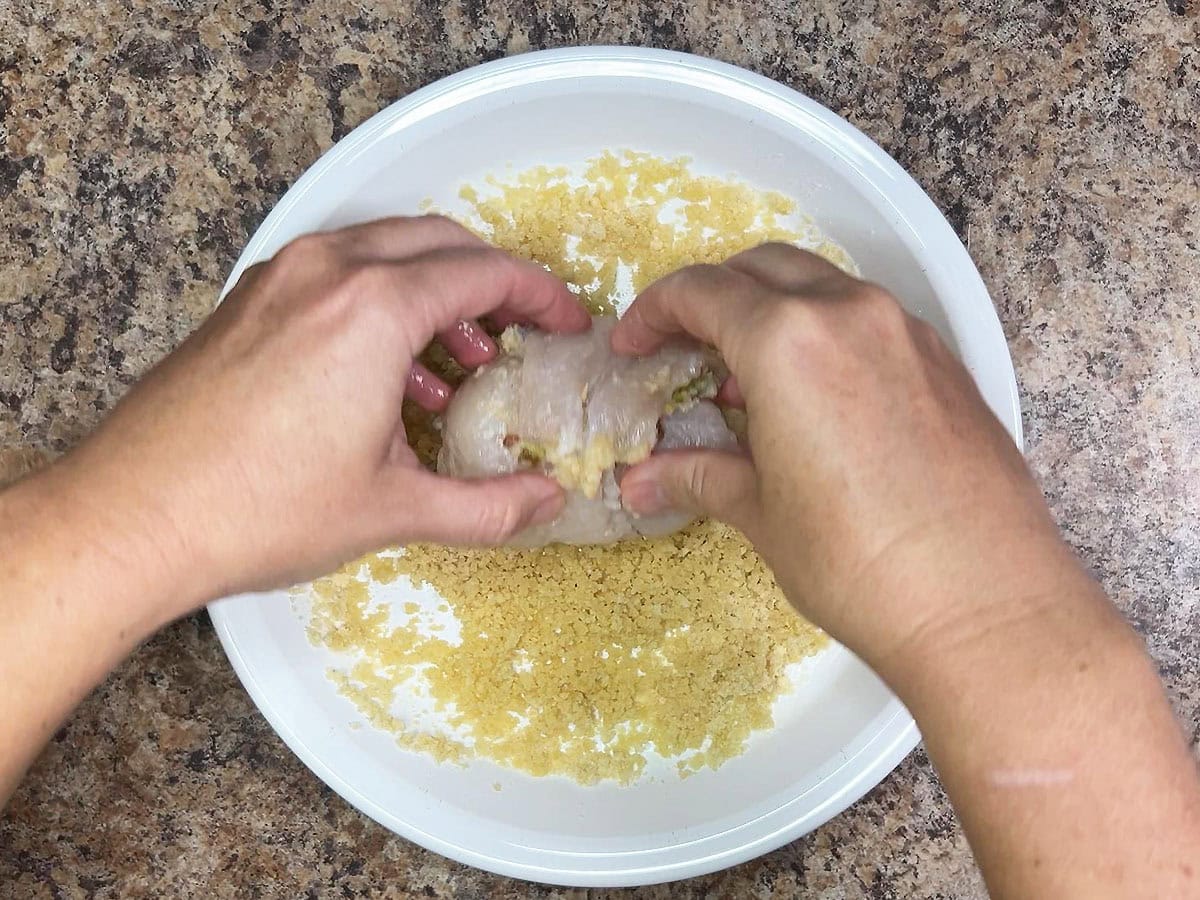
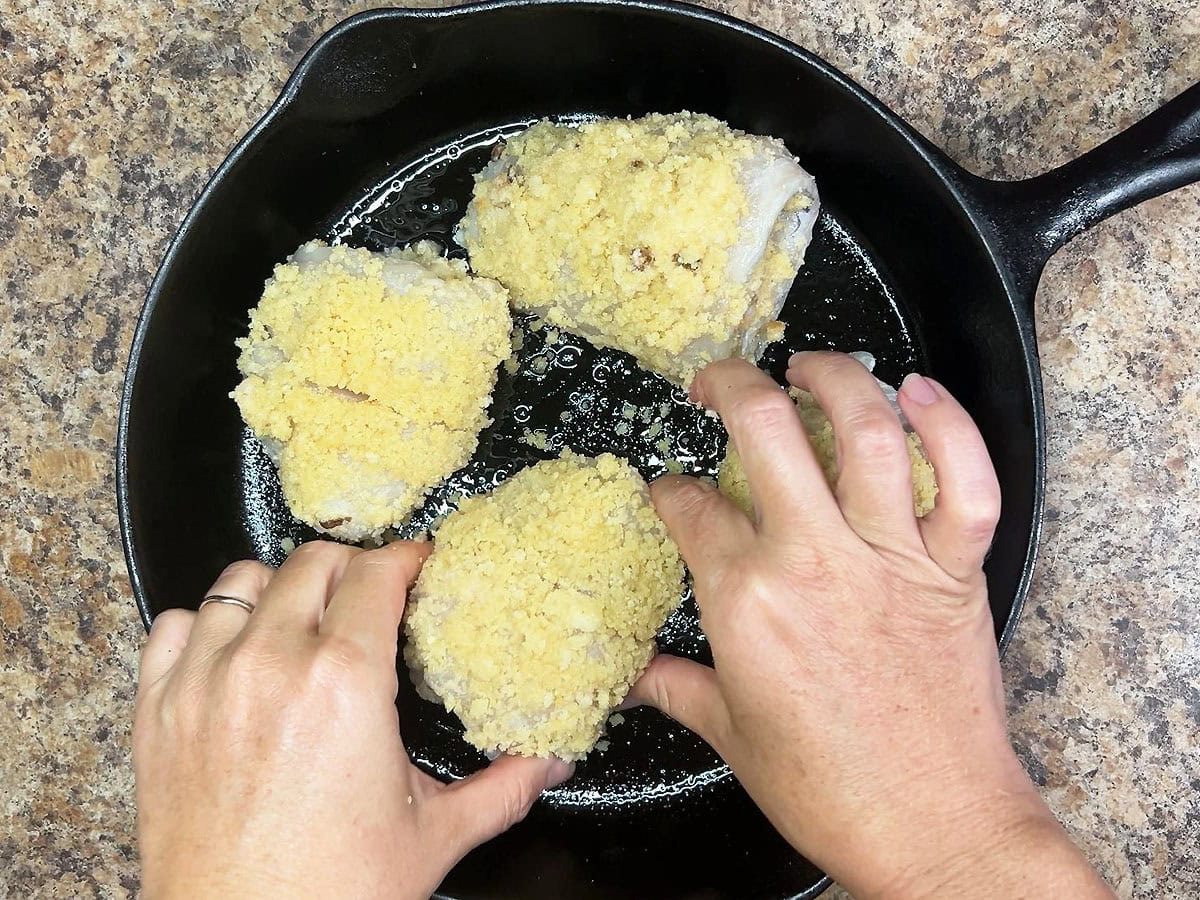
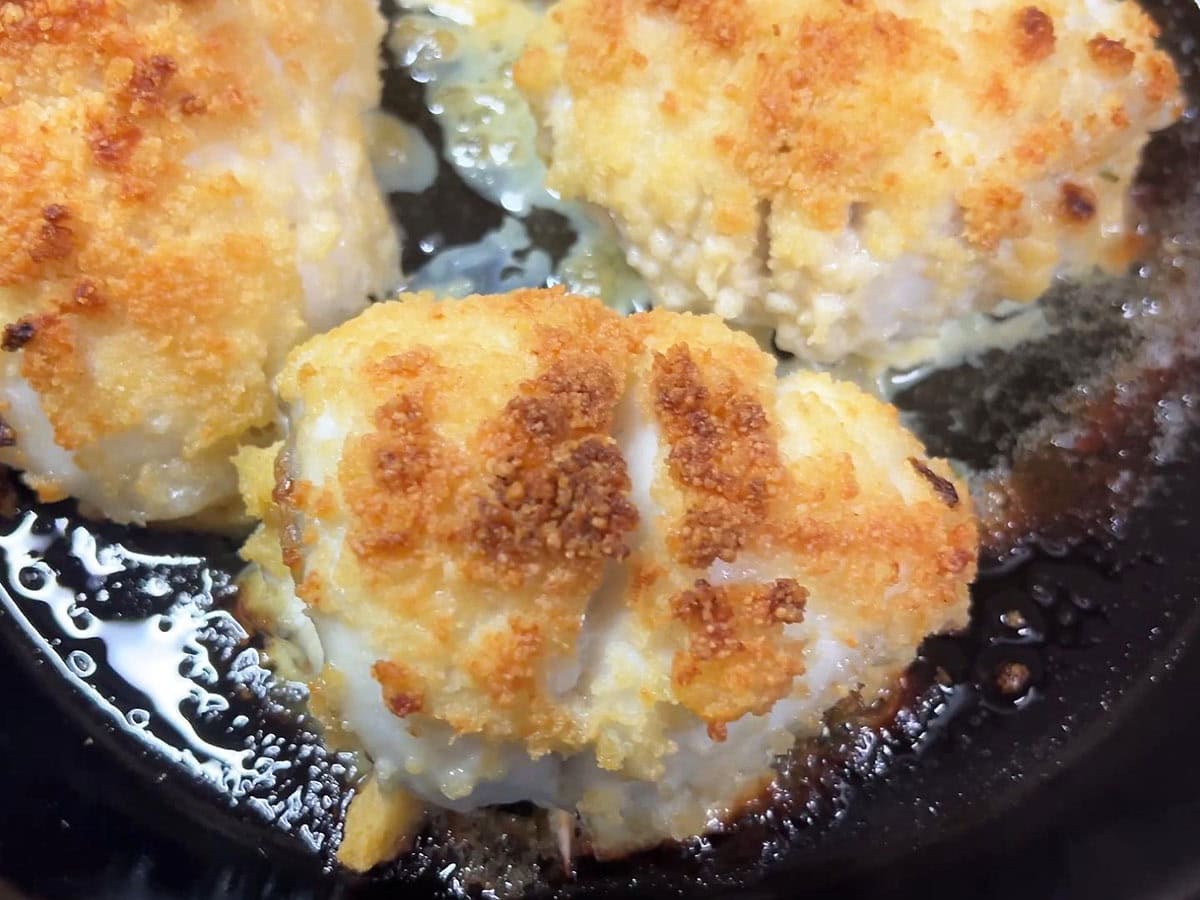
Storage, freezing and reheating instructions
Storage. Let the catfish cool completely. Place the leftovers in an airtight container or wrap them tightly with foil or plastic wrap. Store them in the fridge for up to three days.
Freezing. To freeze before baking, assemble the catfish rolls and secure them with toothpicks. Do not add the breadcrumb topping yet. Wrap each roll tightly in plastic wrap and then in foil, or place in a freezer-safe container. Freeze for up to two months. When ready to use, thaw overnight in the fridge, then top with the breadcrumb mixture and bake as directed.
To freeze after baking, let everything cool completely. Wrap individual portions tightly in foil or place in freezer-safe containers. Freeze for up to two months. When ready to use, thaw overnight in the fridge.
Reheating. To reheat in the oven, preheat your oven to 350°F. Place the catfish in a baking dish and cover loosely with foil (to prevent the fish from drying out). Bake for 15–20 minutes, or until heated through. If you want to crisp the topping, uncover for the last five minutes.
To reheat in the air fryer, reheat at 350°F for 6–8 minutes until warmed through and the breadcrumb topping is crisp again.
I do not recommend reheating the fish in the microwave. You run the risk of overcooking the fish and the topping won’t be crispy with this method.
Frequently asked questions
Wild-caught catfish can pick up strong, earthy, or muddy flavors. Soaking fillets in buttermilk for 15-30 minutes helps draw out and mellow those flavors, making the fish taste cleaner and fresher. If your catfish was farm-raised (in the U.S., of course) you can skip the soak.
Yes! If catfish isn’t available, try using tilapia, sole, or flounder—any mild, thin white fish fillet that rolls easily will work.
Definitely. Assemble the stuffed catfish rolls up to a day in advance and store them (unbaked) in the fridge. When you’re ready, top with breadcrumbs and bake as usual. This makes it a great option for dinner parties or meal prep.
Any leftover homemade or store-bought cornbread will work. Just avoid very sweet versions—they may overpower the shrimp and savory elements. Day-old or slightly dry cornbread actually works best!
Yes. Canned shrimp, pre-cooked frozen shrimp, or even raw shrimp (chopped small) will work. If using raw, the shrimp will cook fully while the fish bakes.
Absolutely. Use gluten-free cornbread and substitute gluten-free breadcrumbs (or crushed gluten-free crackers) in place of Panko.
Make sure to roll the fillets from the thicker end toward the tail, avoid overstuffing the fish, and use toothpicks to secure the rolls during baking (just don’t forget to remove them before serving!).
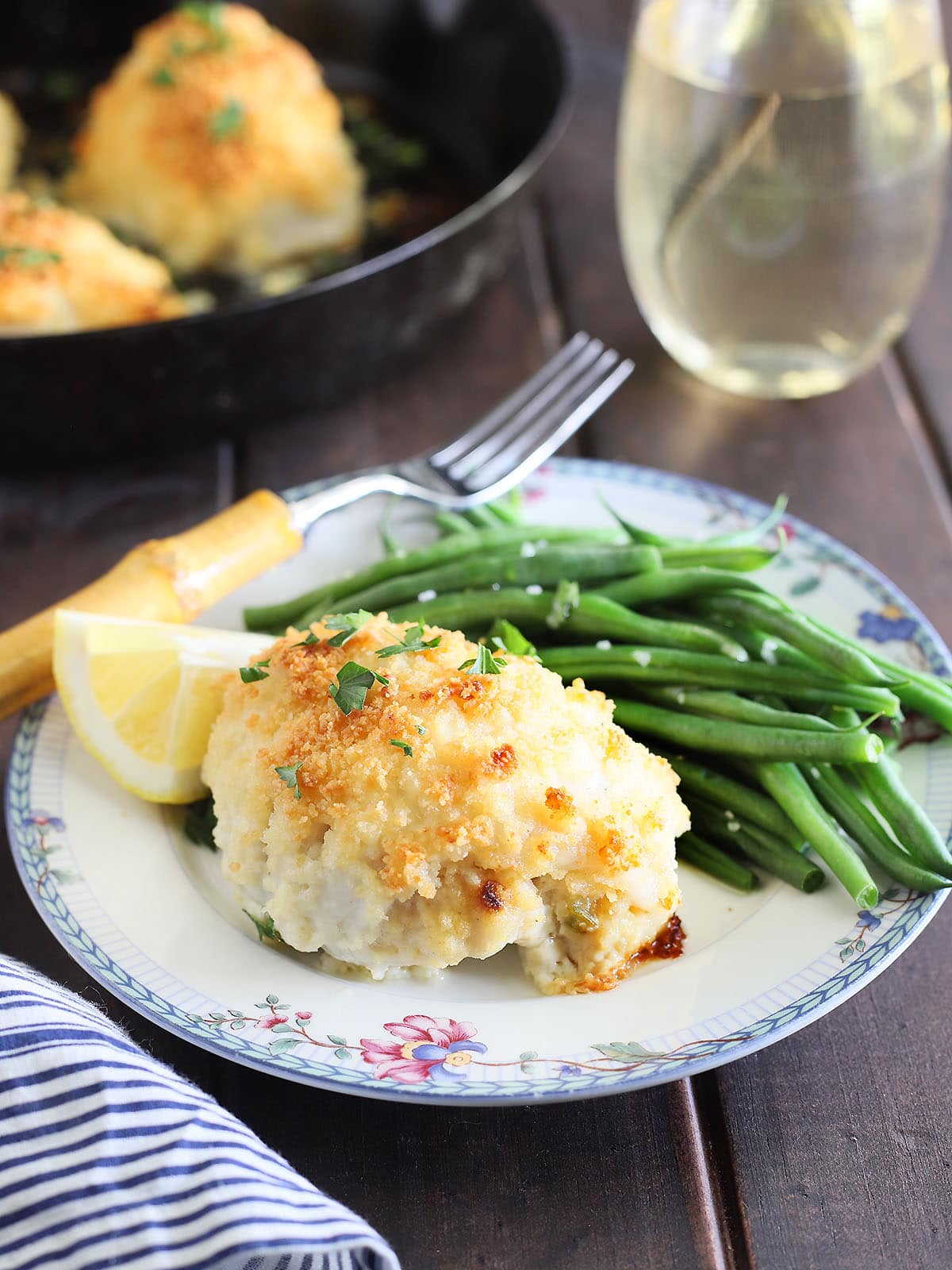
Serve stuffed catfish fillets with
More Catfish Recipes:
Tried This Recipe? Let Me Know!
If you made these Baja grilled catfish sliders, I’d love to hear how it turned out! Your ratings and reviews help others find the recipe and give me great feedback too. ⭐️

Cornbread and Shrimp Stuffed Catfish
Ingredients
- 4 tablespoons unsalted butter divided
- 1/4 cup finely diced celery
- 1/4 cup finely diced yellow onion
- 1 cup crumbled cornbread
- 1/2 cup chicken broth plus more as needed
- 1 large egg slightly beaten
- 1/4 cup tiny shrimp or shell-off cooked and diced shrimp
- 4 catfish fillets
- 1/4 cup Panko breadcrumbs
- 1/4 cup grated Parmesan cheese
- Chopped fresh parsley and fresh lemon wedges, optional
Instructions
- In a medium skillet, melt two tablespoons of butter over medium heat. Add the celery and onion and sauté for seven minutes until the vegetables are tender. Remove the vegetables from the heat and set aside to cool slightly.
- Add the cornbread to a medium mixing bowl. Pour in the chicken broth. Using a fork, begin mashing the cornbread mixture – adding additional broth, if needed – until the mixture is slightly soupy.
- Mix in the egg, shrimp, and cooked vegetables. Stir until all the ingredients are well combined. Season with salt and pepper.
- Lay the catfish, flat side up, on a flat work area. Season with salt and pepper.
- Carefully spoon about three tablespoons of the cornbread stuffing down the center of each fillet, stopping about one inch from either end.
- Starting at the thicker end of the fillet, gently roll the fillets up. Secure the tapered end with a toothpick. Season the outside of the fillets with salt and pepper.
- Melt the remaining two tablespoons of butter. Add the panko breadcrumbs and stir until the breadcrumbs are coated with the butter. Stir in the Parmesan cheese until combined.
- Dredge the top of each catfish roll in the breadcrumb/cheese mixture.
- Place the fillets in a greased casserole dish or oven-safe skillet. Bake at 350 degrees F for 25-30 minutes until the fish is opaque and the breadcrumb topping is golden brown.
- Remove the toothpicks before serving. Garnish with fresh parsley and a squeeze of fresh lemon juice, if desired.


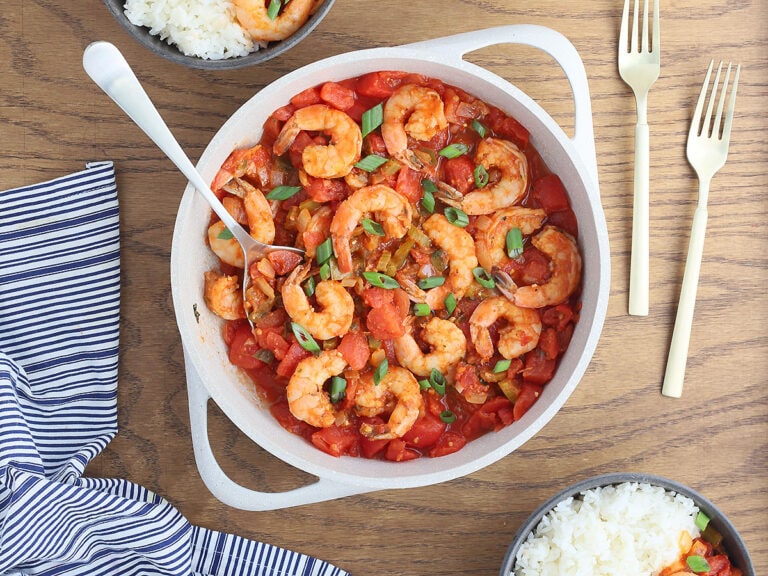
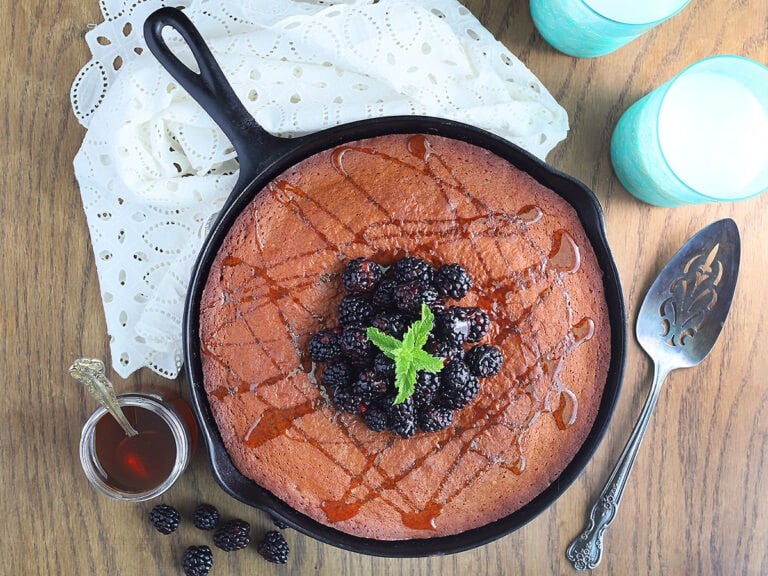
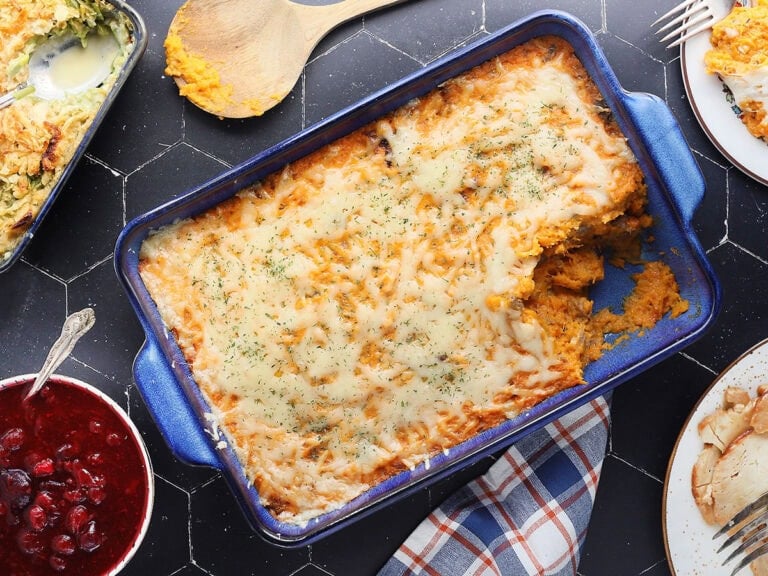

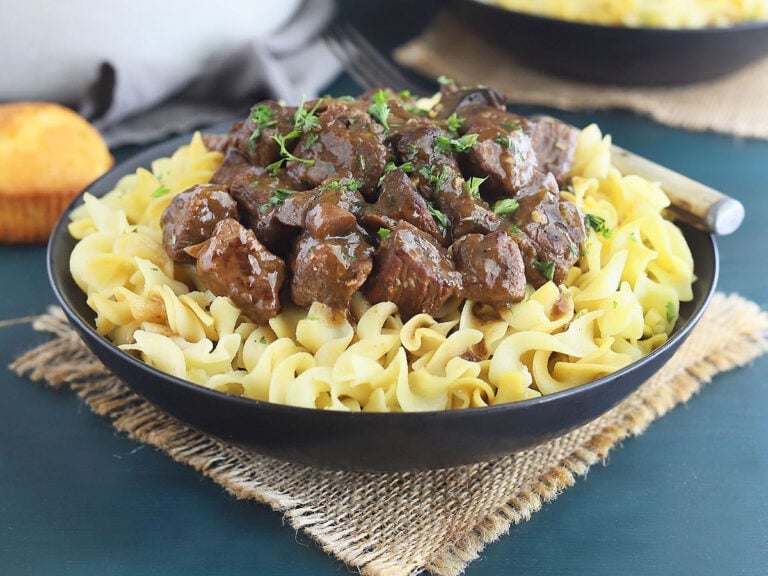
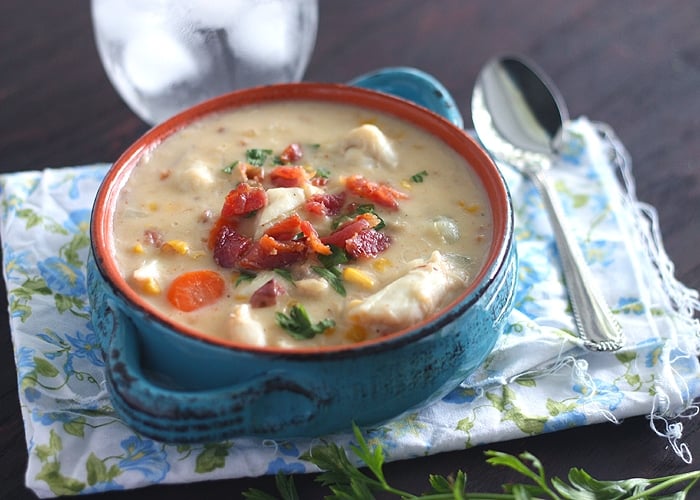
Hi Jacquie, I have not personally tried to deep fry these. You can certainly try. If you do, please let me know how they turn out.
can I deep fry instead of baking, please?